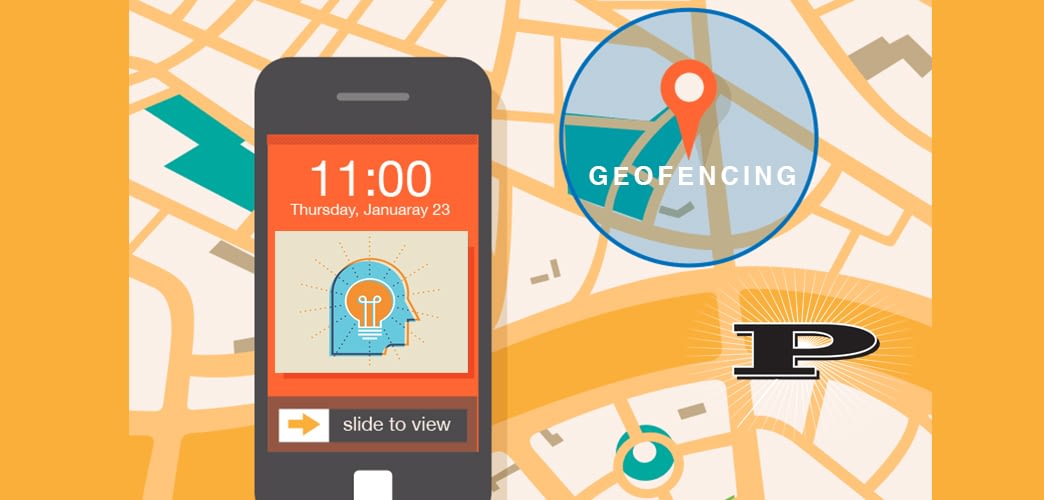On this episode of Brandstorm, Co-hosts Dan Trzinski and Nancy Christopher are joined by Rob Brennan and Tyler Schmidt, two digital marketing specialists at Platypus Advertising + Design, to talk about geofencing and OTT. We’ll find out the benefits to marketers and how it is used in advertising.
What is Geofencing and OTT?
Geofencing uses location-based technology, like GPS or WiFi, with mobile devices like your smart phone to serve messages to consumers within a targeted geography or area of high relevance. A geofence is a virtual perimeter around a real-world geography. It could be one or more physical locations like a store, a zip code or even the addresses of those on an email list. When someone with a mobile device enters that targeted location, the geofence acts as a trigger to serve an ad. Its uses in advertising are endless…from promoting a product or service with special discounts or offers and encouraging visitors to go to a special attraction to inviting people to your booth at a trade show or pampering your fans with loyalty rewards, for example.
OTT stands for “over-the-top,” the term used for the delivery of film and TV content via the internet, without requiring users to subscribe to a traditional cable or satellite pay-TV service like a Comcast or Time Warner Cable. OTT and Geofencing work well together. You can set up fences within homes with streaming devices like Roku, Apple TV or Amazon Fire. Advertisers can follow consumers based on specific demographics and criteria no matter what they are watching.
Benefits of Geofencing
Relevancy and value are the biggest benefits of geofencing, according to Rob. If you have done your homework and know your target audience, it is possible to serve the right message to the right person at the right time. The more defined your target audience is, the more relevant your message will be to them.
Value is also significant. Geofencing allows marketers to deliver massive amounts of impressions to targeted audiences at a fraction of cost of traditional media. In the Milwaukee area, the cost is typically between $7 to $10 per thousand, but it will vary in other markets.
Targeting Audiences
While advertisers can target customers using demographics like age, gender and household incomes, Tyler says geofencing enables you to dive deeper using contextual search, interests and purchasing, browsing and behavioral history. With this criterion, advertisers can get specific. For instance, if you are in a car wreck, you might receive messages from a rental car company, a car dealer, an auto shop, or a personal injury attorney.
Privacy Issues
Your phone is a GPS unit. While you can limit the number of in-phone apps you are using, you can never be completely off the radar. Smart phones can still be tracked even if all location services and GPS have been turned off. If you want complete privacy, Rob suggests that you buy a burner phone.
Questions to Ask Your Geofencing Vendors
There are a lot of media outlets, including television stations, radio stations, billboard companies and newspapers, getting into geofencing as an extra revenue stream. There is nothing wrong with this, however you may be spending more for your services going through second, third and fourth parties who are reselling the service. Ad agencies, like Platypus, have direct access to data providers.
Secondly, digital marketing in general is not the primary service these media outlets provide. Ad agencies, like Platypus, have digital marketing specialists like Rob and Tyler, whose sole responsibilities are working with you to develop campaign strategies and manage your ad accounts every day.
So, here are two important questions to ask your potential vendor:
- What is your company’s core business?
- What is your access to the data provider’s inventory? Are there any limits or competitive disadvantages when bidding on the inventory?
ROI
Geofencing can be easily tracked based on what you need to measure success, be it the number of impressions, click-thru-rates or number of conversions. The real exciting point is that it answers an advertiser’s question of whether a consumer has seen an ad and responded. It can actually track a potential customer going into your business and making a transaction. And geofencing works no matter what size your company is. For as little as $2,000/month, you can achieve amazing results.
Connect with Rob and Tyler
Rob Brennan:
Email: rob@platypus-ad.com
LinkedIn: https://www.linkedin.com/in/robertpbrennan/
Tyler Schmidt:
Email: tyler@platypus-ad.com
LinkedIn: https://www.linkedin.com/in/tyler-schmidt-18306a28/

